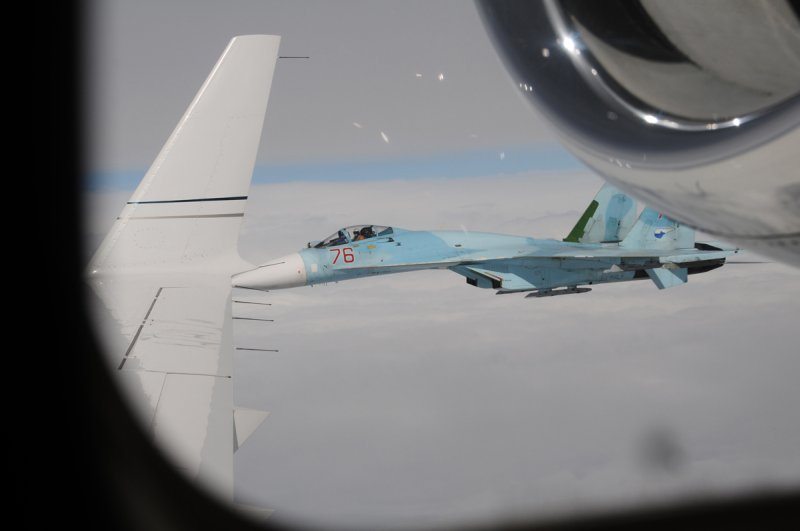Within minutes after takeoff, the first fighter aircraft are visible off the left wing and Exercise Vigilant Eagle 2011 is well underway.
The Russian Federation Air Force and the North American Aerospace Defense Command (NORAD) conducted their second Vigilant Eagle cooperative exercise Aug 5-9, further strengthening the communication channels between Russia and NORAD in the event of a hijacked aircraft transiting across the Bering Sea.
“This exercise provides the opportunity for Russia, Canada and the United States to enhance our coordination and partnership to cooperatively identify, intercept and follow a suspect aircraft as it proceeds across international boundaries, thus reducing the threat of air terrorism,” said Canadian Air Force Col. Todd Balfe, Deputy Commander, Alaskan NORAD Region. “Vigilant Eagle 2011 builds upon the remarkable success of last year’s exercise, when we conducted the first live-flying event between Russia and the United States since the Second World War.”
The exercise simulated a U.S. flagged carrier, under the call sign of Fencing 1220, on an international flight which had been seized by terrorists. The aircraft did not respond to communications and the Federal Aviation Administration and Transportation Security Agency notified NORAD, who diverted Airborne Warning and Control and fighter aircraft to monitor and intercept Fencing 1220.
As the aircraft continued east, the FAA notified the Russian Federal Air Navigational Service, and the Russian Federation Air Force launched an Airborne Warning and Control aircraft and fighters to intercept as well.
A key component of the exercise was the communication link between the U.S. E-3 AWACS and the Russian A-50 Mainstay, as well as between the air operation centers at Joint Base Elmendorf-Richardson (Alaskan NORAD Region) and Petropavlovsk-Kamchatski. As in the previous exercise, Russia and NORAD exchanged controllers and liaison officers to facilitate the exercise.
“The ability for the tactical and operational units to effectively communicate in this time sensitive scenario ensures the cooperative hand-off of Fencing 1220,” said Colonel Balfe. “This is critical to passing warning indications between our countries so the other side can posture their forces and close any gaps or vulnerabilities air terrorists may try to exploit.”
“This exercise clearly allowed us to refine the processes and procedures to use in the event of a real-world, cross-border air terrorism scenario,” he added.
With the 10th anniversary of the terrorist attacks from Sept. 11, 2001, a little more than a month away, the significance of this exercise cannot be overlooked. Since Sept. 11, 2001, NORAD has responded to more than 3,400 possible air threats in the United States and has flown more than 59,000 sorties with the support of Airborne Warning and Control System and air-to-air-refueling aircraft. However, air terrorism is not bound to North America airspace and the Russian Federation is also prepared to counter any threats to their homeland.
“This combined exercise continues to moves us forward in the development of cooperation between our countries in mitigating the threat of air terrorism. It is a relevant issue in the defense of U.S. and Russian citizens from possible threats of air terrorism,” said Russian Air Force Col. Alexander Tikhonov, Chief of Department (Coverage of Military Readiness and MWR of Troops) – member of the editorial team of “Krasnaya Zvezda” newspaper.
Onboard Fencing 1220, the exercise observers captured a view not seen by many. F-15C Eagles, based at Joint Base Elmendorf-Richardson, diverted from a training mission to respond to Fencing 1220.
“It’s a little exhilarating,” said Brian Morris, a pilot with Global Aviation. “As a civilian to fly ‘in formation’ with F-15s and four Russian SU-27s was a once-in-a-lifetime opportunity.”









